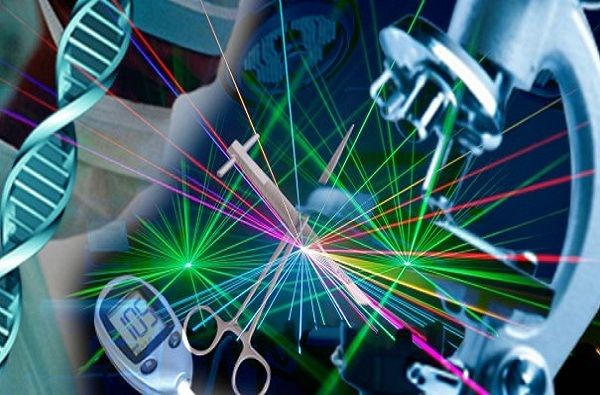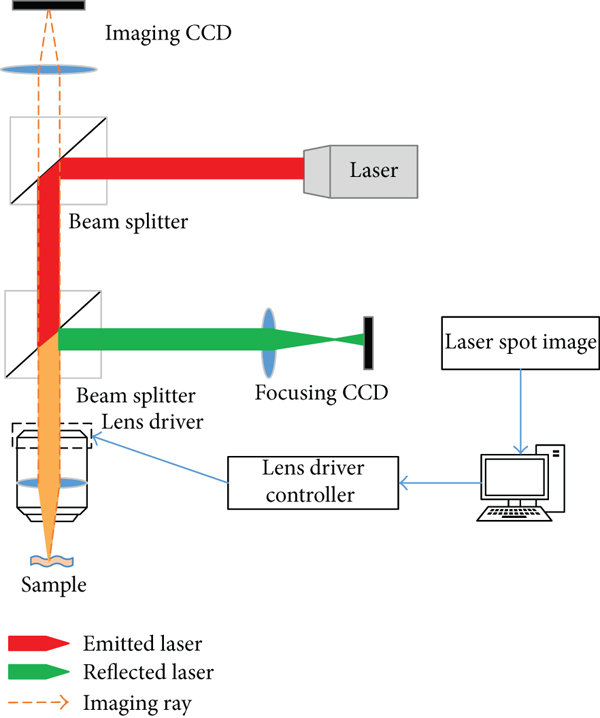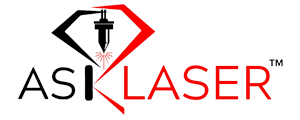Laser technology produces an intense beam of light with a very narrow range of wavelengths. The word LASER stands for Light Amplification by Stimulated Emission of Radiation. The laser beam is produced by stimulating atoms or molecules to emit photons, particles of light, in a particular direction.

The essential components of a laser system include a gain medium, which is the material that generates the laser beam, and an optical cavity, which contains the gain medium and reflects the light back and forth to amplify it. A power source, such as a flash lamp or electrical discharge, excites the atoms or molecules in the gain medium and creates the laser beam.
The laser beam can be controlled and directed by mirrors and lenses to perform various functions such as cutting, welding, drilling, or marking. Different types of lasers can be used depending on the application.
Laser technology has numerous applications in various fields. Here are some of the most common applications of laser technology:
Industrial applications: Laser technology is used in industrial applications such as cutting, drilling, welding, and surface treatment of metals and other materials.
Communication applications: Laser technology is used in fibre optic communication systems to transmit data at high speeds over long distances.
Military applications: Laser technology is used in military applications such as laser range finders, laser target designators, and laser weapons.
Entertainment applications: Laser technology is used in entertainment applications such as laser light shows, projectors, and displays.
Environmental applications: Laser technology is used in environmental applications such as remote sensing, air quality monitoring, and atmospheric research.
Laser cutting applications in aerospace: Laser cutting technology is widely used in the aerospace industry for precision cutting and shaping various materials such as metals, composites, and plastics.

Research applications: Laser technology is used in various research fields, such as physics, chemistry, and biology, for studying materials and processes at a molecular level.
Scientific applications: Laser technology is used in scientific applications such as spectroscopy, microscopy, and holography.
Medical applications: Laser technology is widely used in the medical field for various purposes, including surgeries, cancer treatments, and vision correction procedures.
Today, lasers in medical applications have helped millions of people’s lives, but how exactly is the application?
Let us explain-
Laser Surgery:
Laser surgery involves cutting medical devices with a focused laser beam to make precise incisions or remove tissue. It is commonly used in procedures such as LASIK eye surgery, laser hair removal, and cosmetic procedures.
The advantages of laser surgery include reduced blood loss, faster healing, and less scarring. This is because lasers can target specific tissues without damaging surrounding areas, resulting in more precise and controlled procedures.
LASIK eye surgery uses a laser to reshape the cornea, improving vision without needing glasses or contact lenses. Laser hair removal targets hair follicles with a laser beam, reducing hair growth over time. Cosmetic procedures like laser skin resurfacing use lasers to remove damaged skin layers and stimulate collagen production for a youthful appearance.
Diagnostic Imaging:
Lasers are used in various imaging techniques, such as optical coherence tomography (OCT), confocal microscopy, and Raman spectroscopy.
OCT uses a low-intensity laser beam to create high-resolution cross-sectional images of tissue layers. Confocal microscopy uses lasers to capture high-resolution real-time pictures of living cells. Raman spectroscopy analyses a laser beam’s light scattering to identify a sample’s chemical composition.
The advantages of laser-based imaging include high resolution, real-time imaging, and non-invasiveness. Examples of medical conditions that can be diagnosed using laser-based imaging include retinal diseases, skin cancer, and brain tumors.

Laser Therapy:
Laser therapy uses lasers for various therapeutic applications, such as photodynamic therapy, laser ablation, and low-level laser therapy.
Photodynamic therapy involves using a photosensitizing agent and a laser to destroy cancer cells or abnormal tissue. Laser ablation uses a laser beam to remove tissue, such as treating liver tumors. Low-level laser therapy uses a low-intensity laser to reduce inflammation and promote tissue healing.
The advantages of laser therapy include minimal side effects and non-invasiveness. Laser therapy can treat cancer, skin disorders, and musculoskeletal injuries.
Laser Safety:
Laser safety is crucial in the medical industry to prevent potential hazards such as eye damage, skin burns, and fire hazards.
Safety measures that should be taken when using lasers include:
- Wearing protective eyewear.
- Using warning signs to indicate laser use.
- Using interlocks to prevent accidental exposure.
Future of laser technology in medicine:
The potential future applications of laser technology in the medical industry include targeted drug delivery, nanosurgery, and optogenetics.
Targeted drug delivery uses lasers to activate or release drugs at specific locations within the body, reducing the need for systemic drug administration and potential side effects. Nano surgery uses lasers to manipulate individual cells or molecules, enabling precise surgical procedures.
Optogenetics uses lasers to control the activity of neurons in the brain, potentially leading to new treatments for neurological disorders.
These advances in laser technology could revolutionize medical diagnosis and treatment by providing more precise and effective therapies with fewer side effects.
To conclude,
laser technology has revolutionized the medical industry by providing a wide range of applications that have improved patient outcomes, reduced side effects, and enhanced diagnostic accuracy. From surgical procedures to diagnostic imaging and therapy, lasers have become essential in modern medicine. The safety of laser technology in medical settings is of utmost importance and should always be considered in any application. With the ongoing advancements in laser technology, the potential future medical applications are numerous. It is exciting to see how these developments will continue transforming healthcare.
